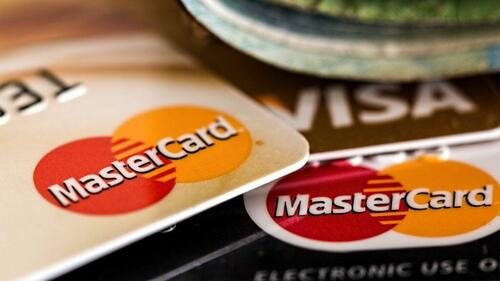 Bad, bad, bad.
Bad, bad, bad.
With credit card interest rates north of 18%, this is the most expensive thing you can do.
But if it comes down to eating or running up your credit cards…
Credit card debt continues to spiral higher as consumers struggle with rising pricesand depleted savings.
In August, revolving credit increased by a staggering 18.1% as total consumer debt surged to a record $4.68 trillion, according to the latest consumer credit datafrom the Federal Reserve.
Total consumer debt increased by $32.2 billion in August, an 8.3% increase on an annual basis. That was well above the $24 billion projection.
In July, it appeared debt growth was cooling slightly, but the August data showed a big jump from July’s 6.8% increase.
The Federal Reserve consumer debt figures include credit card debt, student loans, and auto loans, but do not factor in mortgage debt. When you include mortgages, US consumers are buried under more than $16 trillion in debt.
US consumer debt grew by an average of over $31 billion per month through the first eight months of the year.
Americans are burning up their plastic in order to make ends meet in these inflationary times.Revolving credit, primarily reflecting credit card debt, rose by another $17.1 billion in August. To put the 18.1% increase into perspective, the annual increase in 2019, prior to the pandemic, was 3.6%. It’s pretty clear that with stimulus money long gone, Americans have turned to plastic in order to make ends meet as prices continue to skyrocket.
Total revolving debt now stands at $1.154 trillion — well above the pre-pandemic record.
Meanwhile, average credit card interest rates have eclipsed the record high of 17.87% set in April 2019.The average annual percentage rates (APR)currently stand at 18.45%. That’s up from 18.03% just a month ago.
https://schiffgold.com/key-gold-news/americans-continue-to-pay-for-inflation-with-credit-cards/